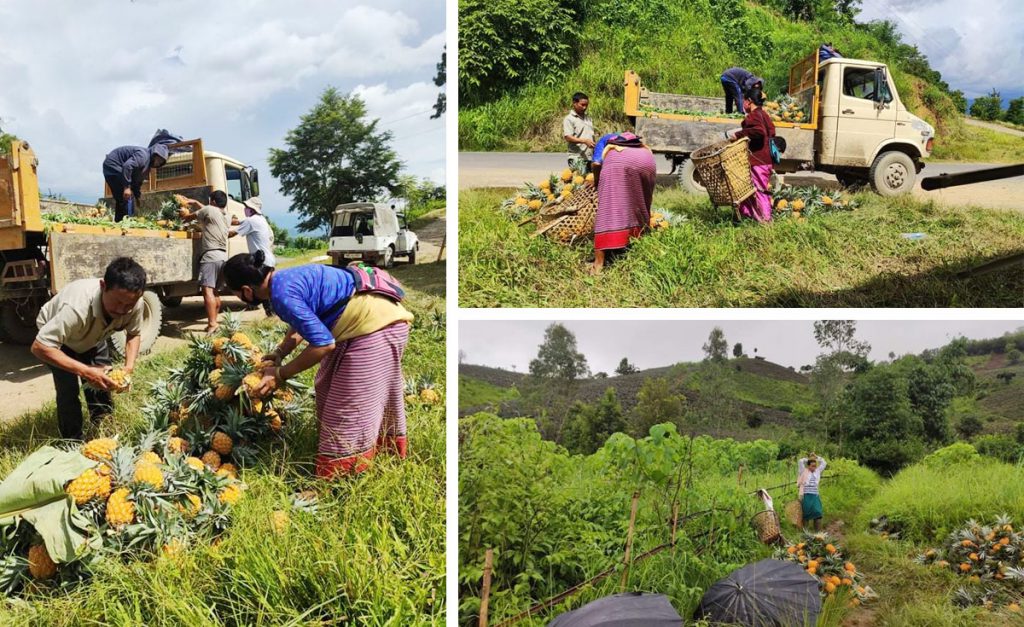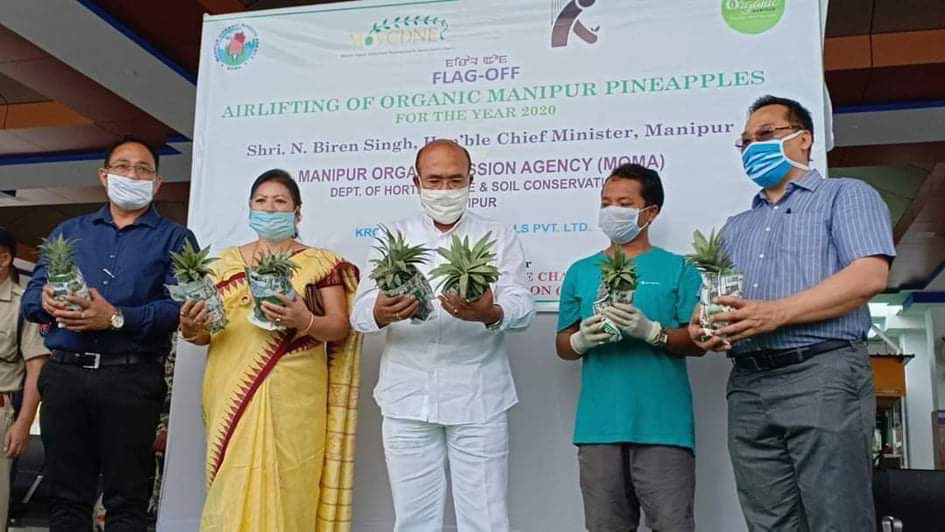
Paowinson Kipgen’s day would begin at 2am when Manipur’s famed Queen Victoria pineapple
Kipgen is an aggregator for pineapple growers in a state thatis the country’s second largest cultivator of this luscious fruit. Pineapple farms account for a little over 12% of agricultural land in Manipur, producing 3.60 crore kg of fruit annually.The ability to grow the fruit sustainably and the increasing demand for Manipur’s distinctly sweet and flavourful variety, have turned many families to pineapple cultivation,along with paddy. In season, a quarter of a hectare of land can produce as many as 5000 pineapples, which means a small family can easily live off the crop, but only if it manages to reach the right market.
When Kipgen went in search of his favourite fruit in Delhi,where he was studying History in Ramjas College, all he found were expensive prickles that were shockingly shrivelled and flavourless, nothing even close to the copiously juicy variety he would have off the fields at home. That was just wrong, he thought. The heady fruit that he had grown up eating had to be show-cased in markets across the country. Abundant pineapple production meant little if there was neither robust marketing nor a stable transportation network. Kipgen decided to take charge and co-founded Krooshi-Karma Naturals Pvt Ltd and within no time it became the first to airlift 100 tons of pineapple from the region. Manipur’s Queen Victoria was finally finding its rightful place in fruit bowls across the country.
NEStories decided to catch up with Kipgen to understand how a delicious tropical fruit made a History major from Kangchup village into a unique entrepreneur. In this wide-ranging interview he speaks of all the roads he’s travelled, the impact of the Narmada Bachao Andolan on his world view and, most of all, his abiding love of the pineapple.
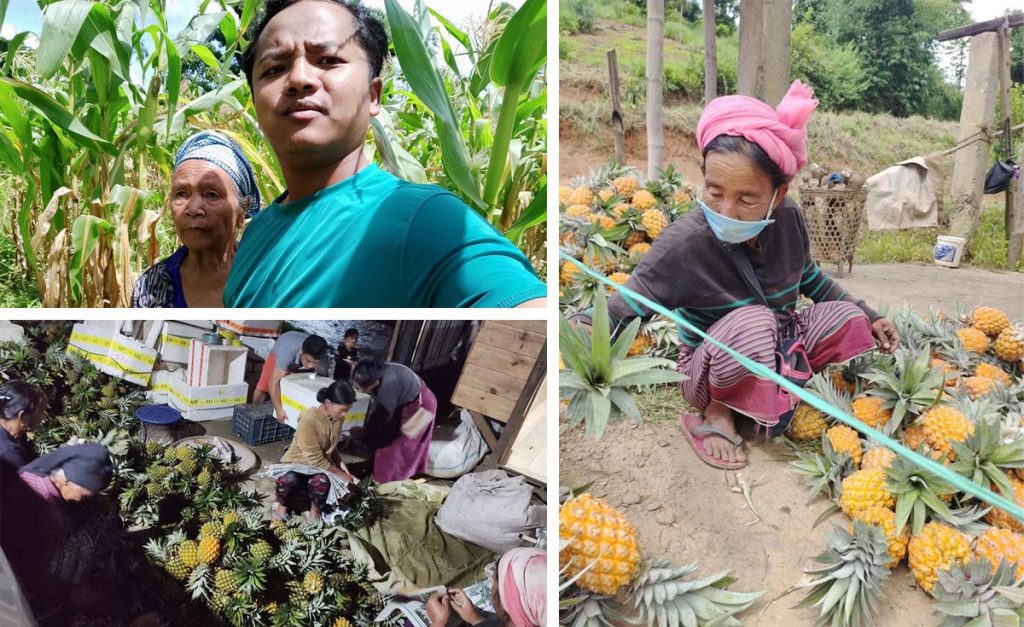
Tell us a bit about your life and what led you to become an agripreneur?
I had first thought of becoming a bureaucrat. If I became an IAS officer I would be able to change the lives of the poor, like myself. But then I attended the 30th anniversary of the Narmada Bachao Andolan in 2015 and I realized my true purpose was to help poor farmers in Northeast India. I could use my education to help them benefit from the abundant resources in the region. So I dropped out of my UPSC coaching and decided to register with TISS (Tata Institute of Social Sciences) in Mumbai. But I was restless. I needed to do something that would bear immediate fruit. Idropped the idea of TISS and returned home to start the work I do today.
Initially there were many challenges, mostly pressure from my relatives to continue with the UPSC. I was also in need of a mentor to guide me in the field.
You mentioned that three years ago you became an aggregator for pineapple. How did this happen, what prompted you to do this?
Firstly the pineapple is one of my favourite fruitsand the pineap
But then we found there were no packaging manufacturing units, transportation was a huge issue and air cargo charges were consuming too much of the total cost. But I soldiered on and along the way I got the opportunity to work with the Manipur Organic Mission Agency, Department ofHorticulture & Soil Conserva
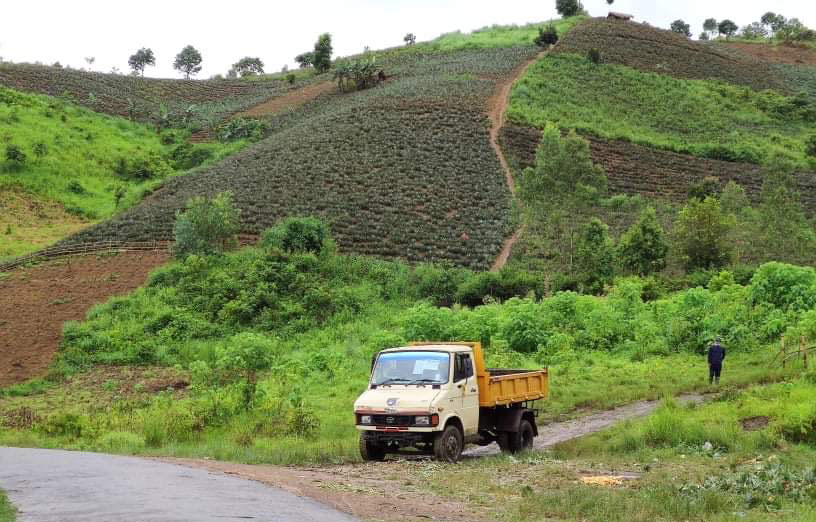
How many growers are in touch with you now? How much land approximately does e
Right now I am directly connected with 189 farmers who grow the Queen Victoria pineapple from the Kangchuppineapple belt. However, sometimes I have to procure the fruit from a few other growers from different districts. Each farmer or pineapple grower has a plantation area of about a hectare each. Close to 15000 – 20000 pineapple plants are cultivated in a hectare of land.
Are you an aggregator for all growers in the state or of a specific area?
I am mostly confined to the Kangchup pineapple belt. However, if there are transportation issues and I am short of the fruit, I do take it from other districts too. I must mention though that during the COVID19 shutdown, I went and procured pineapple from farmers who are far from my own place in order to help them sell their crop in different parts of India.
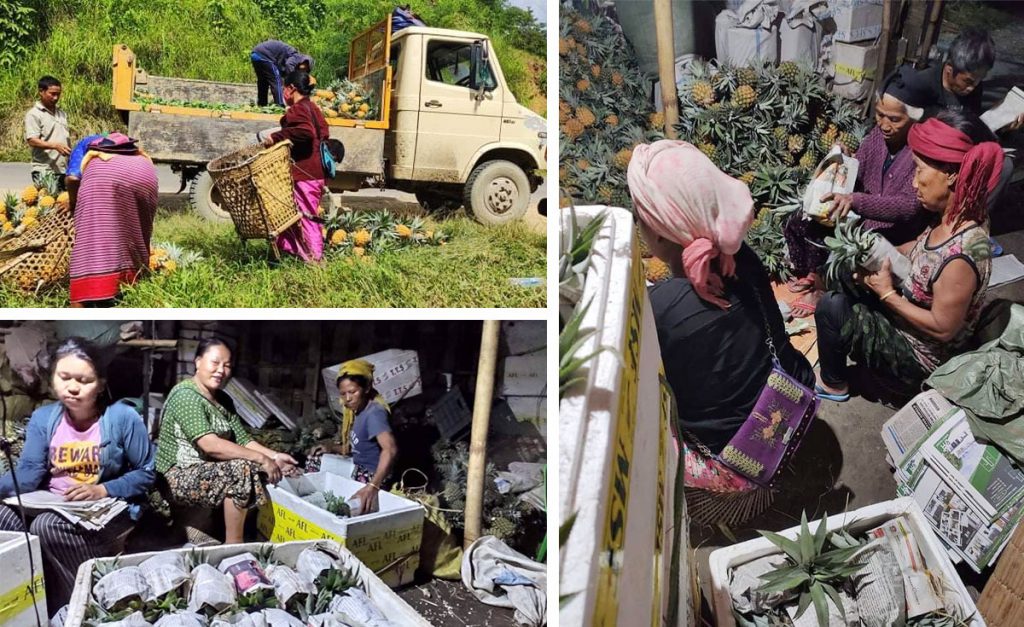
How do you source the market for the growers and what is the biggest benefit they get out of this?
Delhi and NCR have been our main markets. We market our pineapples by getting shops to actually taste the fruit. When they experience its sweetness and its unique flavour we start getting positive responses. That is how we have been able to now reach six of the most important cities in the country.
For our farmers, the immediate benefit has been a better price for their pineapples - at least Rs 10 more per piece - zero waste and a greater interest and awareness in the value of Manipur’s Queen Victoria pineapple.
How does the supply and demand chain operate? Also how do you control quality and preserve overripe fruits?
Kipgen: Since the pineapple is
Transportation is always a headache since the pineapple farms are located in remote areas where there is an absence of good roads. How do you address this?
This is a real problem that farmers and aggregators, like myself, face. We urgently need a line of processing unitsand storage facilities. That can only happen if funds are allocated either by the government or by private investors. That really is the need of the hour if we want to see Manipur’s unique pineapple reaching all the major markets in the country.
